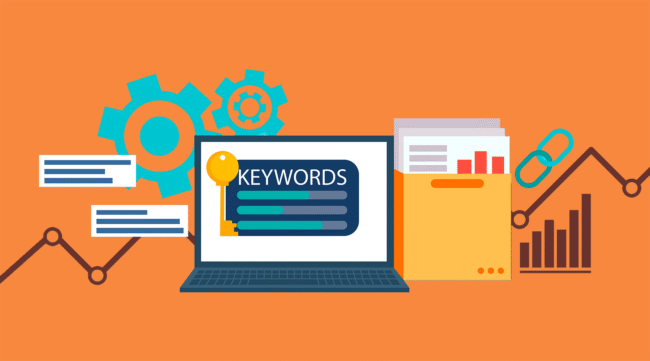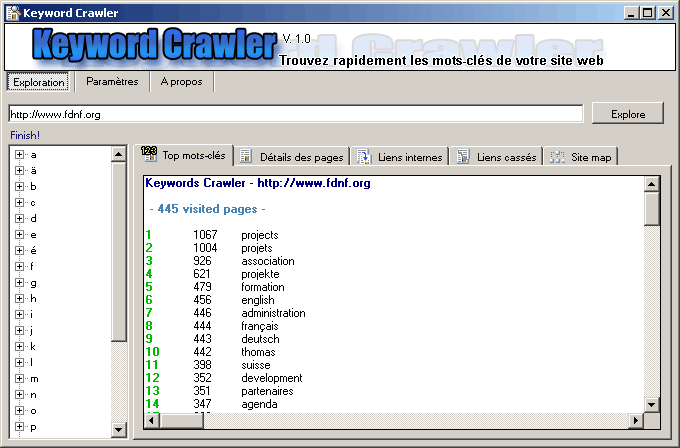The way users interact with search engines has evolved. Search intent is dynamic, language shifts fast, and competition for visibility gr
The way users interact with search engines has evolved. Search intent is dynamic, language shifts fast, and competition for visibility grows stronger every day. SEO professionals and content creators alike need faster, smarter ways to keep up.
Enter the Keyword Lists Crawler—a powerful solution for mining fresh, relevant keyword data from real web content. Rather than relying on keyword tools alone, crawlers let you tap directly into live webpages to extract keyword-rich information, providing a clearer view of how competitors and industry leaders are winning the SEO game.
If you’ve never used or built a keyword list crawler, this article is your complete guide.
Must visit: tradeinfinite
What Is a Keyword Lists Crawler?
A keyword lists crawler is a custom or third-party tool that crawls web pages, extracts textual content, and compiles keyword-rich data from titles, metadata, body copy, headers, and other structured elements.
Unlike keyword suggestion platforms that depend on historical search behavior, crawlers gather data from existing content, providing a more current and contextual view of how keywords are being used online right now.

Why Keyword Crawlers Matter in 2025
In a digital environment where:
- Voice and conversational queries are growing
- Search engines prioritize semantic understanding
- AI-generated content floods the internet
…you need more than keyword planners that recycle generic suggestions.
Keyword crawlers let you:
- Find unique long-tail opportunities
- Understand competitors’ real keyword structures
- Pull topic clusters from real content
- Detect semantic variants and topical coverage gaps
How Keyword Crawlers Work: The Technical Flow
Let’s break down what happens under the hood.
✅ 1. Seed URL Input
You provide a list of URLs, a domain, or a sitemap. The crawler uses this list as its starting point.
✅ 2. Page Retrieval
Using HTTP requests (e.g., via Python’s requests or Node.js’s axios), the crawler pulls each page’s HTML.
✅ 3. Content Extraction
HTML is parsed to extract content from:
- <title>
- <meta name=”description”>
- <h1> to <h6> headers
- Paragraph tags (<p>)
- List items (<li>)
- Anchor text
- Image alt attributes
✅ 4. Text Cleaning
The raw text is processed to remove:
- HTML tags
- Stopwords (e.g., “and”, “is”, “with”)
- Numbers, dates, special characters
✅ 5. Tokenization & Frequency Analysis
Words are broken into tokens, lowercased, and counted. You can also extract bigrams or trigrams (two- or three-word phrases) to uncover high-value long-tail terms.
✅ 6. Keyword Output
The result: a sorted keyword list based on frequency, page structure, or contextual relevance—ready for analysis or integration into your content workflow.
When and Where to Use a Keyword Lists Crawler
Keyword crawlers are most valuable in the following scenarios:
🔹 SEO Competitive Analysis
Crawl a competitor’s top pages to find:
- What keywords are used in H1s and titles
- Repetitive topic coverage
- Semantic keyword variations
🔹 Topic Ideation & Clustering
Crawl multiple blog posts or guides to identify recurring keywords. Use this data to plan comprehensive, interlinked topic clusters or pillar pages.
🔹 Product Page Optimization
Analyze product listings from e-commerce giants to see what descriptive terms are frequently used (e.g., “lightweight hiking backpack” vs “ultralight trail gear”).
🔹 Local SEO & Service Niches
Crawl local service sites to discover how they describe services regionally. This is perfect for tailoring keyword use to match geo-specific search intent.
🔹 Content Refreshes
Want to update a stale post? Crawl the top-ranking competitor articles and compare their keyword use to your existing copy.
How to Build a Simple Keyword Crawler (Python Example)
Here’s a compact code sample that crawls one page and extracts common keywords.
python
CopyEdit
import requests
from bs4 import BeautifulSoup
import re
from collections import Counter
def get_keywords(url):
response = requests.get(url)
soup = BeautifulSoup(response.text, ‘html.parser’)
text = soup.get_text()
words = re.findall(r’\b[a-z]{4,}\b’, text.lower())
common_words = Counter(words).most_common(25)
return common_words
url = “https://example.com”
keywords = get_keywords(url)
for word, freq in keywords:
print(f”{word}: {freq}”)
Note: For crawling multiple pages, you’ll need URL queuing, rate limiting, and potentially proxy rotation to avoid being blocked.
Advantages of Keyword Crawlers Over Keyword Tools
| Feature | Keyword Tool | Keyword Crawler |
| Based on live content | ❌ | ✅ |
| Shows keyword in context | ❌ | ✅ |
| Custom page targeting | ❌ | ✅ |
| Real semantic phrase capture | ❌ | ✅ |
| Free or low-cost options | ❌ (often paid) | ✅ (can be custom-built) |
Tips for Effective Crawling
To get high-quality keyword results, follow these best practices:
✔️ Use Reliable Source URLs
Don’t crawl just any page. Focus on:
- Top-performing competitors
- Niche-specific blogs
- Authoritative content hubs
✔️ Avoid Blocked Pages
Check the site’s robots.txt file before crawling. Never scrape login-only or gated content.
✔️ Batch by Page Type
Group URLs by category (e.g., all product pages or all blog posts) to keep keyword lists relevant to a single content format.
✔️ Cluster and Analyze Output
Once your list is built, group keywords into categories:
- Informational vs transactional
- Product attributes vs user intent
- Primary vs secondary keywords
✔️ Validate with Search Volume (Optional)
After crawling, you can feed the most frequent keywords into a volume-checking tool to prioritize based on traffic potential.
FAQs: Keyword Lists Crawler
1. Is it legal to crawl websites for keywords?
Generally, yes—if the site allows it in their robots.txt file and your usage complies with ethical standards. Avoid crawling personal or restricted content.
2. Can I crawl dynamic or JavaScript-heavy pages?
Basic crawlers can’t parse JavaScript-rendered content. Use headless browsers (like Puppeteer or Selenium) if you need full content rendering.
3. Can keyword crawlers detect keyword intent?
Not directly. However, based on placement (e.g., headers, CTAs), and clustering, you can infer whether the intent is informational, navigational, or transactional.
4. What languages can a keyword crawler handle?
With proper encoding and language-specific stopword lists, crawlers can extract keywords in virtually any language, including multilingual sites.
5. Can I use crawlers for voice search optimization?
Yes. Crawlers can extract long, natural phrases (e.g., from FAQs, reviews, or forums) that reflect how users speak—ideal for voice search targeting.
Final Thoughts
A Keyword Lists Crawler is more than just a tech tool—it’s a strategic advantage in modern SEO and content marketing. It gives you direct access to the language of the web, helping you align your copy with real-world user behavior and competitor strategies.
Whether you’re building your own tool, using a third-party service, or combining crawled data with search volume insights, keyword crawlers offer unmatched control, accuracy, and freshness in keyword research.
If you want to move beyond shallow SEO tactics and build content that ranks, resonates, and performs—crawl smarter.




COMMENTS